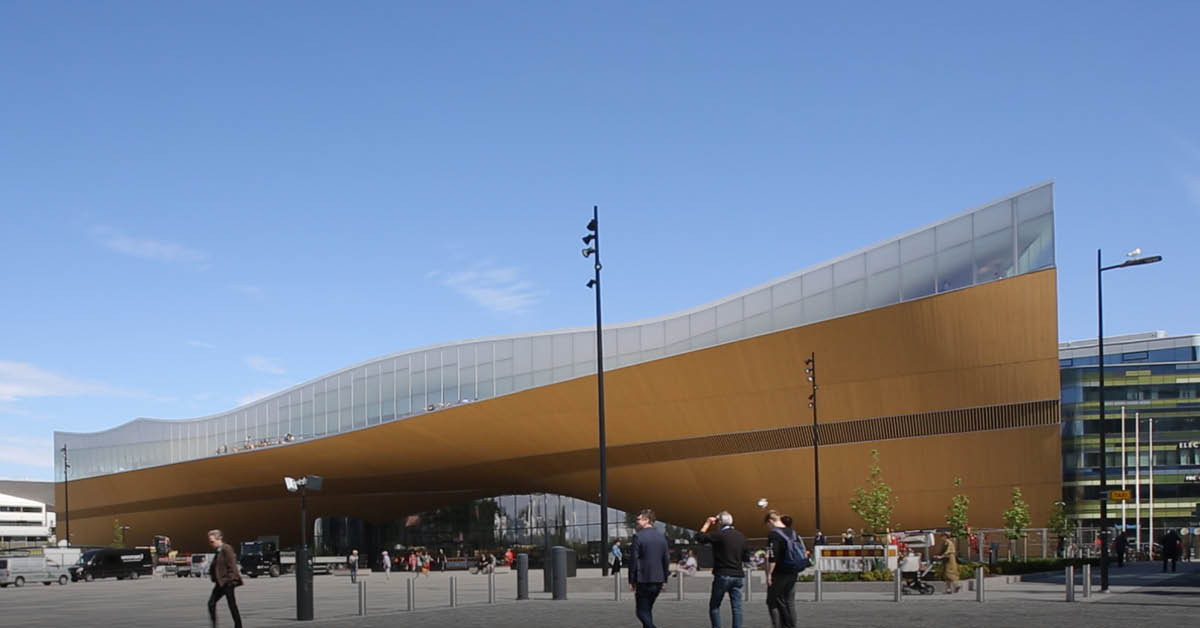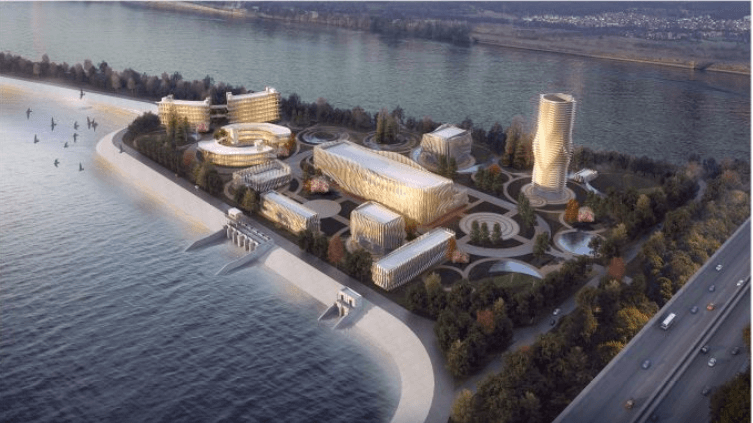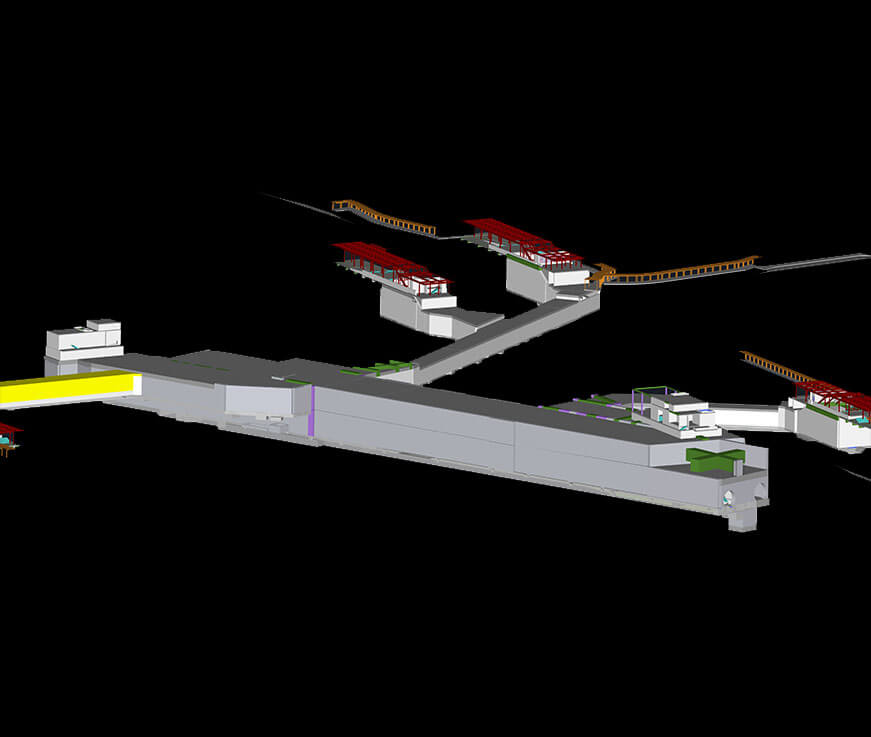Helsinki Central Library Oodi
Helsinki, Finland
-
Glodon Products Involved: MagiCAD software: MagiCAD Piping, MagiCAD Ventilation and MagiCAD Sprinkler Designer for AutoCAD
Helsinki’s Newest Landmark, an Architectural Challenge for its Designers
Project Description
Company: Ramboll
Project: Helsinki Central Library Oodi
Location: Helsinki, Finland
Schedule: 2018
Client: City of Helsinki
Architect: ALA Architects
MagiCAD software: MagiCAD Piping, MagiCAD Ventilation and MagiCAD Sprinkler Designer for AutoCAD

Helsinki’s new central library Oodi, with its glass and steel structures and wooden facade, is the capital city’s newest landmark. In no time at all, it has quickly become a popular meeting place and event venue. The ultra-modern, energy-efficient library is a showcase of architectural and engineering expertise.
Ramboll was responsible for the structural design, project management, MEP design, and maintenance manual coordination for the project. Hannu Martikainen, project director for HVAC engineering at Ramboll, was the project leader in building services engineering for the Oodi project.
An architectural challenge for the designers
Oodi’s unique architecture posed a real challenge for the designers and engineers. However, the very first challenges were related to the building’s location in downtown Helsinki and its town plan.
“With Oodi, the roof was considered part of the facade and it was preferred that no technical units should be installed on the roof. Therefore, all the technical equipment and maintenance facilities had to be hidden from sight in the basement and in concealed spaces within the building,”?Hannu explains.
The framework of the building is made up of two steel arches over 100 metres long. This steel bridge construction causes structural movement of exceptional magnitude, up to a maximum of 140mm, which had to be taken into account in MEP design.
“The movement of the building’s steel bridge structure is extensive, depending on the season, temperature and the load on the building. This was reflected in the design of the building technology, which had to be implemented in an unusual way,”?Hannu says.
“We used flexible connectors in all ducts and pipes, and we also had to design the drains with double slope. This meant we were able to ensure that as the building moves the minimum slope is maintained at all times,”?Hannu continues.

Oodi’s third floor is clear of any visible MEP technology, which ensures there is no technical equipment to spoil the beautiful impression created by the spacious architecture and the undulating ceiling.
“The floor height of the second floor was raised to allow the ventilation and cooling systems with their ducts to be embedded in the space between the floors,”?Hannu explains.
The building’s third floor is flanked by large windows in all directions. In order to reduce the heat load caused by sunlight, the designers and architects worked in close cooperation to come up with innovative solutions.
“We worked closely with the architect in the design of the facade. The number and locations of the beautiful white dots in the windows were designed with energy simulators and architects so that the facade also helps reduce solar gain,”?Hannu says.
Modeling enables cooperation
Building information modeling played an essential part in the Oodi project as it enabled close collaboration between designers from different fields.
“The architectural, structural and MEP designers all produced digital models of their systems. From the outset, we used a combination model that was maintained throughout the project. In practice, each designer submitted weekly their own data model to a project bank from which the data model coordinator compiled a common IFC data model for review. This was the only way to study and coordinate difficult and complex issues,”?Hannu explains.
Due to the architecture of Oodi, the space allocations for MEP systems rarely had regular shapes. However, modelling allowed the systems to be fitted in spaces that sometimes were highly irregular.
“In Oodi, all the spaces and surfaces are curved and non-parallel. For example, the wall of the building’s main facade is almost at an angle of 45 degrees, and all the ducts behind it are at the same angle within the wall structures. Without modelling, we would have had to create hundreds of sectional views in order to outline the system,”?Hannu says.

Designers placed their trust in MagiCAD
Ramboll used MagiCAD software in the MEP design for the Oodi project. In particular, MagiCAD’s calculation functions proved useful and helped verify the functionality of the systems designed.
“We utilized MagiCAD’s features related to flow technology, pressure loss calculation, ventilation duct flow technology and noise technology. Of course, we also used MagiCAD’s basic features to check and balance the networks. With MagiCAD, designers can reliably verify that the system is working as it should,”?Hannu says.
Keys to the success of the Oodi project
Challenging construction projects always involve surprises. At the same time, they provide us with the opportunity to learn and improve our expertise. According to Hannu Martikainen, one of the most important lessons learned from the Oodi project was the significance of cooperation.
“In such a complex and challenging project, it’s extremely important to have a good team spirit and be able to exchange ideas openly,”?Hannu emphasises.
Another key to the success of the project was the time allocated to the design process. The design time is often short because it is thought to yield a better project margin. However, projects planned in a hurry may have problems that are then reflected in different areas.
“Design time is not always appreciated. The Oodi project is proof that by investing in the design and giving it the time it requires, it is possible to implement extremely complex solutions and buildings,”?Hannu explains.
The extraordinary design solutions required by the Oodi architecture, as well as its significance as a new landmark in Helsinki, made the project simultaneously challenging and rewarding.

Ramboll is a leading international engineering and consulting company. Ramboll works across the following markets: Buildings, Transport, Planning & Urban Design, Water, Environment & Health, Energy and Management Consulting. The company employs over 15,000 experts in 35 countries.










